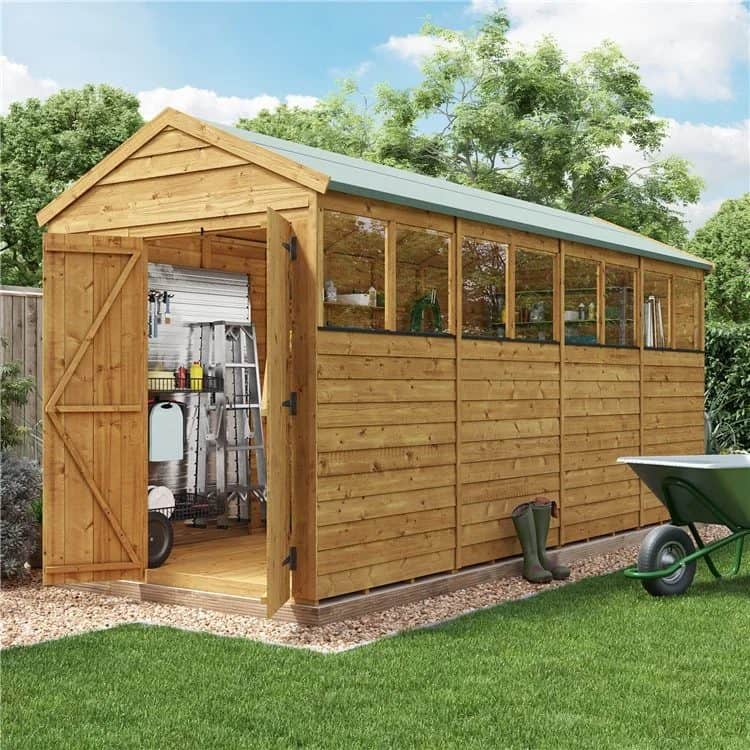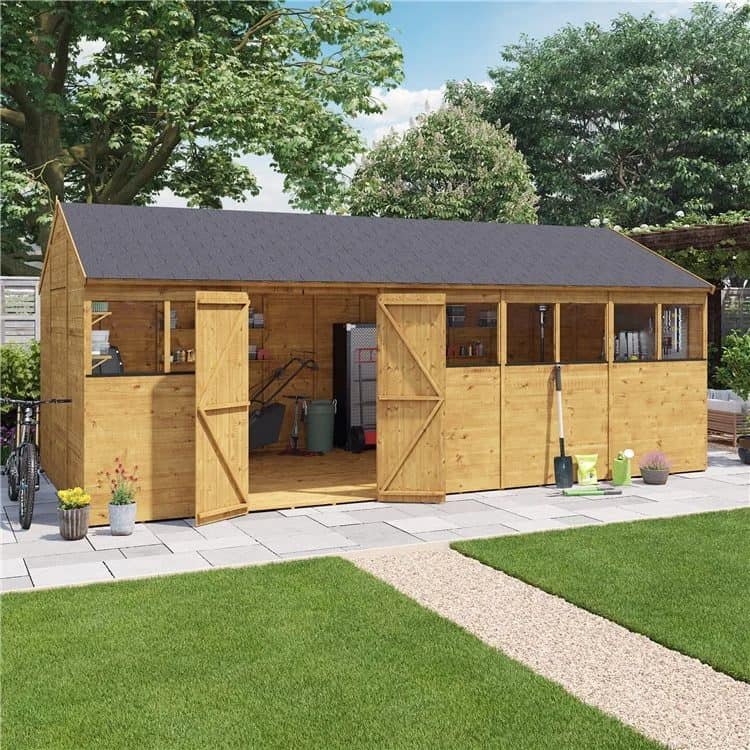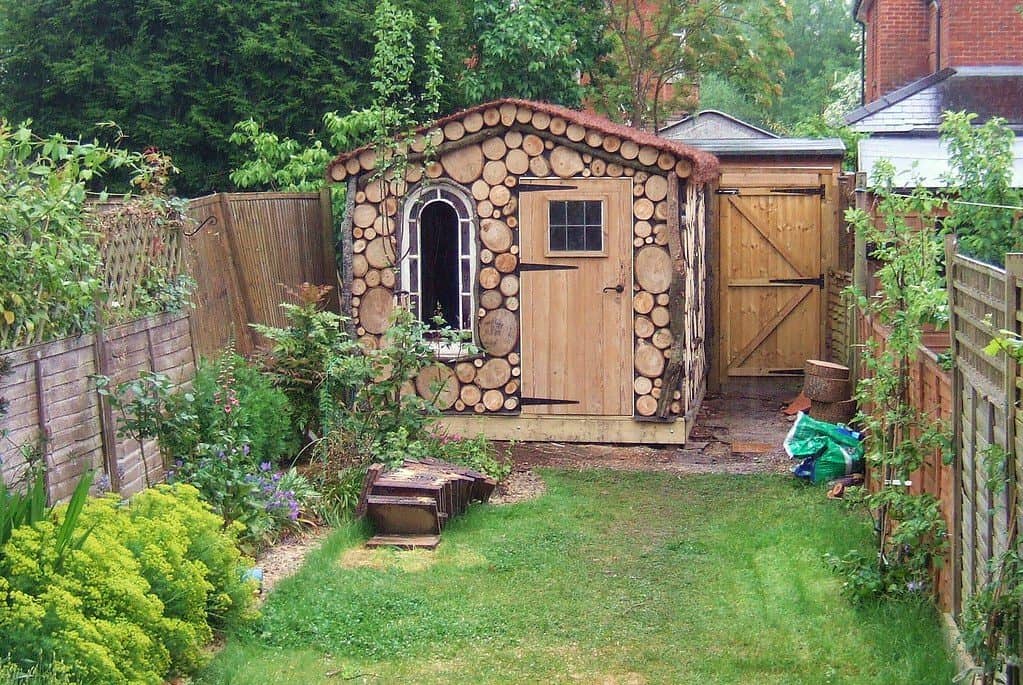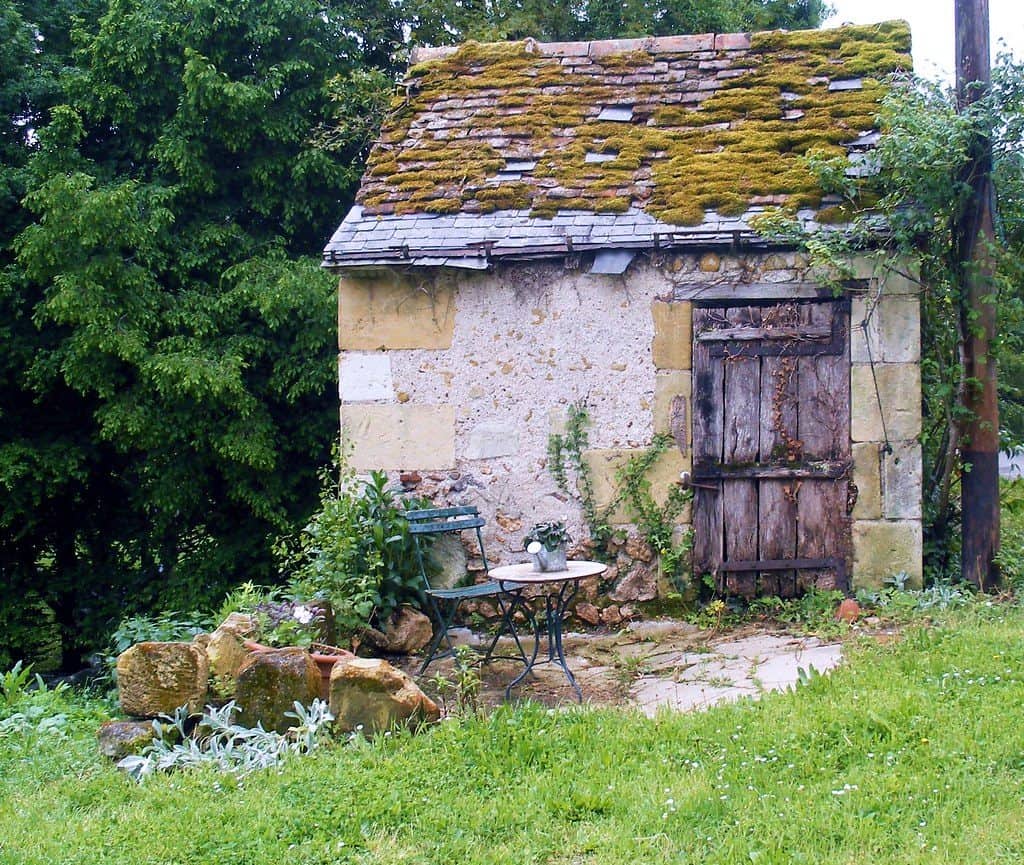Jump to:
The location is among the top considerations when positioning your shed. It covers the distance to your garden boundary and the level of exposure to hazards such as flooding.
Get your outdoor building in the ideal spot, and you’ll get the most out of it. Take note of these points below for guidance.
1. The size of your garden

This has one of the biggest effects on the proper location of your outdoor storage. The available space must have enough room for a pathway that leads easily to the entrance. This ensures easy access without any risk of tripping over obstacles on your way to the shed.
Also, consider leaving some extra space around the sides of the structure. You might not need it right now, but it gives you space to add things later if you want to.
2. Proximity to boundaries

Positioning your shed against fences seems like no trouble, but a few issues may arise. Depending on who’s next door, it could get on your neighbour’s nerves.
If your wall backs onto a neighbour’s house, this is a no-go. Legally, a shed can’t be placed within two metres of a dwelling (house) boundary. Don’t make trouble for yourself by breaking this rule.
Consider how this might affect its structure if you place it against a fence or wall. For more information, read our ‘How Close Can Your Shed Be to a Fence?’ guide next.
3. Exposure to the elements

Shield the shed from the unpredictable British weather by not placing it in an exposed area. For instance, if it’s in the middle of the garden, you expose the building to rain = more chances of water damage. It’s best to situate it within the shadow cast by another building, like your home, for added protection.
If you have limited space, installing guttering may suffice. This addition will collect rainwater away from the shed. The same goes for a roof overhang, which gives the window and the bottom boards the needed barrier.
4. Stability

Your garden shed must have a stable base and foundation for stability and longevity. A proper base allows air to circulate under the shed to prevent mould and rot. It also helps support the structure’s weight, preventing it from sinking.
Avoid areas of the garden you know to get the wettest – it’s a shed, not a ship! Check the ground around your property to see if the earth has any sloping holes or humps and bumps. If you have a sloped plot, this may demand more effort to create a solid understructure.
Tip: Consider following a guide on how to build a shed base for more information.
5. Consider outdoor activities
If you’re a gardener, positioning your shed close to your garden beds allows for easy access to tools and supplies. This proximity can streamline your gardening tasks and save time. But if the shed is mostly for storing things, it doesn’t matter as much how far it is from where you usually do things.
Perhaps you have a lively family who loves spending time outdoors. You often host BBQs and play games. Placing the structure closer to your patio can be advantageous. This setup allows quick access to sports equipment or cookout supplies.
Alternatively, you could utilise an outdoor storage box to store toys and small items related to specific activities.
6. Adhere to local ordinances
Local ordinances are rules set by your local government. To make sure you follow these rules, contact your Local Planning Authority (LPA). They’ll likely ask you what you plan to use the shed for.
Some areas have strict rules about how close your shed can be to fences and other buildings. It’s a good idea to familiarise yourself with these rules to avoid problems. You can also find out about any exemptions that might allow you to skip getting permission. Stay informed and ask questions to make sure you’re following the rules properly.
Round-up
Before ordering a shed, dedicate time to determine the best position on your property. With this, you can avoid the hassle and make the best use of your new structure. Get it wrong, and your outbuilding may be more of a headache than a convenience.
If you haven’t invested in one, explore Garden Buildings Direct for options. Up next on your reading list: How Many Sheds Can I Have in My Garden?
You may contact us or call us at 01909 768840 if you have any questions.
Garden Sheds For Sale









